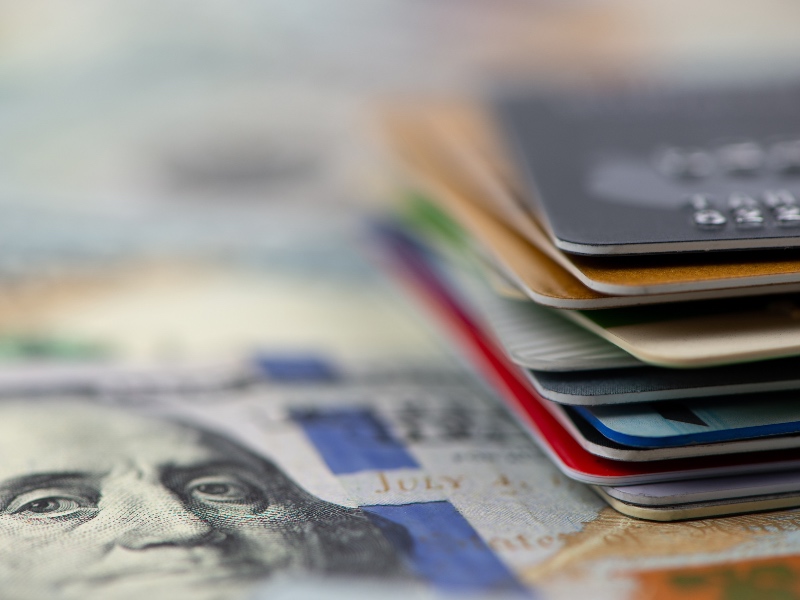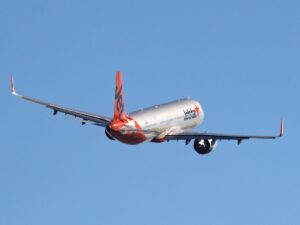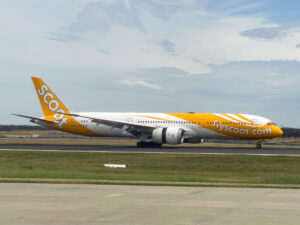
We’re lucky in Australia to have a relatively competitive credit card market. Our banks routinely offer up to 150,000 bonus frequent flyer points to new customers, and there is a wide range of point-earning credit cards to choose from. This is not something that can be said for most countries around the world.
But, as the saying goes, “everything’s bigger in America”. While Australians have relatively good opportunities to earn frequent flyer points from credit cards, we’re simply no match for the larger, ultra-competitive and highly rewarding U.S. credit card market!
It’s an inescapable fact that credit cards in the United States are just so much better than in Australia. The good news is that it is possible for some Australians to get a U.S. credit card… although it’s not necessarily easy.
A more competitive, more rewarding credit card market
There are many dozens of points-earning credit cards available in Australia. But the United States – one of the world’s most capitalist countries – simply has more banks and more credit cards available. The U.S. population is 13 times larger than Australia’s, so it’s a much larger market with far more competition.
The average American also has more credit cards than the average Australian. There are around 14.2 million active credit cards in Australia (an average of 0.56 cards per person) compared to over 1 billion in the United States (an average of more than 3 per person). In fact – and almost alarmingly – 14% of Americans have at least 10 credit cards. With so many Americans applying for credit cards, and many more cards available overall, banks are extremely competitive and offer very compelling sign-up offers.
It’s relatively easy for Americans to access new credit cards. Perhaps the only real restriction on churning comes from the infamous “5/24” rule of Chase Bank – the largest credit card issuer in the U.S. Under the 5/24 rule, as it’s unofficially known, Chase will only approve new credit card applications if you have opened less than 5 new credit cards in the previous 24 months. The fact that this is a hugely-discussed topic on U.S. blogs is a clear indication of just how many credit cards Americans use and how prevalent credit card churning is.

Australian banks also offer generous sign-up bonuses to new customers on a regular basis. These offers are generally only available to new customers that haven’t had a card with that bank in the past year. Many U.S. credit card bonuses also exclude existing and recent customers, but there are simply more unique card providers available.
Australian banks are also now cracking down on churning much more by requiring new cardholders to keep cards open for longer in order to earn the full amount of bonus points. Put simply, credit card churning is easier in the United States.
Better credit card reward programs in the USA
There is a far greater variety of co-branded credit cards in the U.S. than in Australia, where the majority are affiliated with Qantas Frequent Flyer. Most of the major U.S. airlines and even many non-American airlines have co-brand credit card deals with U.S. banks, as do many hotel loyalty programs such as Hilton Honors and Marriott Bonvoy. These cards often come with complimentary hotel status as well – something that was offered by Macquarie Bank’s Hilton Honors card in Australia until it was discontinued last year.
As in Australia, many American banks also offer their own credit card reward programs. Customers can then choose to transfer their points as required to partnering airline and hotel loyalty programs, or to redeem for cashback, vouchers or merchandise directly through the bank’s own loyalty program.
In Australia, Amex Membership Rewards, Diners Club Rewards and Citi Rewards (for Prestige cardholders only) are the only credit card rewards programs to offer more than just a handful of transfer partners. Diners Club, Citi and CommBank are the only ones that offer point transfers to SkyTeam airlines – although the CommBank Awards transfer rates are very uncompetitive.
In general, U.S. credit card reward programs have far more and better quality loyalty program transfer partners. Most of the major U.S. credit card programs such as Chase Ultimate Rewards, Citi ThankYou, Capital One Rewards and the U.S. based Amex Membership Rewards program offer transfers to airlines across all three of the major airline alliances (Oneworld, Star Alliance and SkyTeam) and various hotel loyalty programs too.
U.S. Amex points, for example, can be transferred to 19 airlines and 3 hotel loyalty programs. Those airlines include Qantas, British Airways, Singapore Airlines, ANA, Avianca, Delta, Alitalia, Emirates, Etihad and El Al.
By offering access to frequent flyer programs spanning all three alliances, U.S. credit card programs make it easier for cardholders to access award availability when using points to book travel. In addition, many of the frequent flyer programs offered do not impose fuel surcharges when booking award flights. This can make a huge difference to the cost of booking award travel.
For example, let’s say that you wanted to book a Swiss Business class flight from Singapore to Zurich. If you had Australian Amex points, you could transfer them to Singapore Airlines KrisFlyer at a 2:1 rate and book the flight using KrisFlyer miles. You’ll pay 92,000 KrisFlyer miles (equivalent to 184,000 Amex points) and around AU$427 in taxes & charges.

U.S. Amex cardholders also have the option to transfer points to KrisFlyer, at a superior 1:1 conversion rate. But U.S. Amex cardholders could also transfer their points at a 1:1 ratio to Avianca LifeMiles, where the same redemption would cost only 78,500 LifeMiles + AU$42 in taxes. (Avianca does not pass on Swiss Air’s $385 fuel surcharge, whereas KrisFlyer does.)

U.S. banks are generally far more generous with cash back rewards, too. Although many Australian credit card reward programs offer cash back in exchange for points, the rates are generally around 0.25 cents per point. In the USA, credit card points can generally be redeemed towards cash back or travel at a rate of over 1 cent per point.
Interchange fees are regulated in Australia
One of the key reasons that U.S. credit cards generally offer more points and better deals is that interchange fees are not regulated.
Banks can afford to award frequent flyer points because they make a small margin on each credit card transaction. This commission is known as the “interchange fee” and is paid by the merchant or business accepting the credit card payment. (This cost is sometimes passed onto customers in the form of a credit card surcharge.)
In July 2017, the Reserve Bank of Australia (RBA) began capping interchange fees on Visa and MasterCard payments in Australia. This resulted in most Australian banks reducing credit card rewards substantially. As card issuers are now making less profit on credit card transactions, the rewards have also been slashed.
The RBA’s interchange fee regulations do not apply to cards issued by American Express. But Amex has still had to adapt to the changing Australian market by lowering its own interchange fees here too, in order to remain competitive and encourage more businesses to accept Amex payments. This culminated in Amex too slashing credit card rewards in April 2019 – not because of regulation, but market forces.
Due to the smaller margins on credit card transactions, many Australian credit card issuers now cap the number of points that can be earned for credit card payments each month. In fact, some Australian credit cards – such as the ANZ Rewards, Macquarie Platinum and HSBC Platinum Qantas cards – only award points at the full rate on the first $1,000 spent each month. After spending this amount each month, remaining transactions either earn points at a reduced rate or not at all.
By comparison, many U.S. banks offer customers incentives to spend more, for example, with bonus points if minimum monthly spending targets are reached!
Can Australians get a U.S. credit card?
With U.S. credit cards so much more rewarding than in Australia, many Australians may be wondering if they can get a U.S. credit card. There is a long-running AFF thread with over 800 posts that seeks to answer this very question. It’s full of useful tips and advice.
In general, to get a U.S. credit card, you would need to have either a U.S. Social Security Number (SSN) or Individual Taxpayer Identification Number (ITIN). If you are a U.S. citizen or resident, you will probably already have a SSN – which you keep for life. But if you have ever worked in the U.S., and you don’t have a SSN, you may be issued with an ITIN.
It would not be possible to get either of these things without being physically present in the United States. Obviously, that’s not possible for most Australians right now due to the border closures. But Australia’s international travel ban won’t last forever.
Another issue for non-U.S. residents could be a lack of credit history in the country. Just like in Australia, banks will check your credit score when determining whether to extend credit to you. If you have no credit history in the United States, your application is likely to be declined. One way to get around this could be to open a U.S. bank account – something you may be able to do in person at a United States bank branch even if you don’t live there. This at least gets you into that bank’s systems, and could assist with any future credit card applications.
I discussed the issue of Australians applying for a U.S. credit card on episode 39 of the AFF on AIR podcast. My guest – an Australian with multiple U.S. cards – shared some tips and advice on that episode.
Of course, everyone’s circumstances are different and the rules could change at any time. You should seek professional advice if you’re thinking about applying for credit in the United States – or anywhere else, for that matter!
Australia’s credit cards are not bad
To be clear, Australian credit card offers are generally not bad – they’re just not quite as good as those in the United States!
Australia’s credit card offers, by global standards, are still excellent. Most other countries don’t have nearly as many point-earning credit cards available, and the sign-up offers overseas are typically far less generous (with a few exceptions).
In the Netherlands, for example, American Express has a near-monopoly on credit cards that reward frequent flyer points. The current sign-up offer on the most prestigious of the Dutch Amex cards, the Flying Blue American Express Platinum, is currently 15,000 Flying Blue miles and a 50% reduction off the €600 (~$984) annual fee in the first year. That’s as good as the offers get in the Netherlands, and it’s a similar story for most other countries.
Join the discussion on the Australian Frequent Flyer forum: Strategy to obtain US Amex















































































